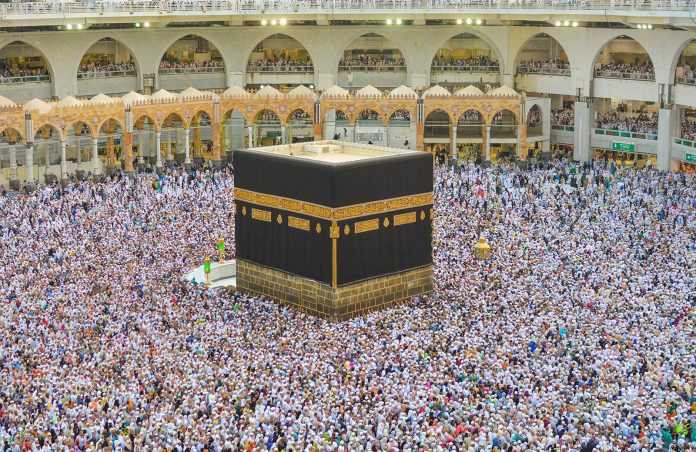Hundreds of thousands of Hajj pilgrims who have just arrived in Makkah have started performing their Tawaf Al-Qudum (Tawaf of Arrival), ahead of moving to the tent city of Mina tonight for the Hajj pilgrimage which starts tomorrow (Monday).
After completing the tawaf, pilgrims will perform sa’i which involves walking or running seven times between the hills of Safa and Marwa, commemorating Hajar’s search for water for her son Ismail (as).
And hundreds of thousands more who are already in the holy city will complete their final preparations before pilgrims will move in large numbers to Mina, which is about 5km from the Grand Mosque, to spend the Day of Tarwiyah in their tents.
The pilgrims will perform Dhuhr, Asr and Isha prayers in Mina at their designated times but in shortened form. The Maghrib prayer, which cannot be shortened, is performed as usual. The pilgrims will spend the day and night engaged in supplications and prayers in their tents.
After performing Fajr prayer on Tuesday, they will start leaving Mina and head to Arafat for the “wuqoof Arafat” ritual, one of the four pillars of Hajj, which marks the peak of the annual pilgrimage.
They will spend the entire day in worship and supplication, seeking forgiveness from Allah and engaging in remembrance, prayers, and recitation of the Quran. This day is considered the most important and significant part of Hajj.
After sunset on the day of Arafat, pilgrims will then proceed to Muzdalifah, where they will spend the night and engage in prayers and collect pebbles for the next ritual.
Subscribe to our newsletter and stay updated on the latest news and updates from around the Muslim world!
On the 10th day of Dhull Hijjah (Wednesday), pilgrims return to Mina and perform the stoning of the Devil ritual (Ramy al-Jamarat). They will throw pebbles at three pillars called Jamarat, which symbolise the temptations of Satan. This act signifies the rejection of evil and the steadfastness of Prophet Ibrahim (as) when he was tempted by Satan.
After the stoning ritual, pilgrims sacrifice an animal, usually a sheep or a goat, to commemorate Ibrahim’s (as) willingness to sacrifice his son as an act of obedience to Allah. The meat is then distributed among the needy.
After the sacrifice, pilgrims have the option to either shave their heads (Halq) or trim their hair (Qasr). This act symbolises the completion of the major rituals of Hajj and the removal of the state of ihram restrictions.
Pilgrims will then return to Makkah and perform another tawaf called Tawaf al-Ifadah, also known as Tawaf al-Ziyarah. This tawaf is similar to the initial tawaf performed upon arrival but without sa’i. It is a reaffirmation of the pilgrims’ devotion to Allah and their completion of the fundamental rites of Hajj.
Before leaving Makkah, pilgrims perform a final tawaf called Tawaf al-Wida, or the Farewell Tawaf.
More than two million pilgrims are expected to perform Hajj this year and this figure is more than double the number of pilgrims performed Hajj in 2022 when Covid restrictions were still in place.
More than 1.62 million pilgrims from outside the Kingdom have already arrived, according to the Saudi authorities. The exact figure of the pilgrims from inside Saudi Arabia has not yet been announced.



















